
Musicians tour the Square inviting the public to the play (Thats's me with the cuatro and mask)
Los músicos recorren la plaza invitando al público al espectáculo (Yo soy el de la máscar y el cuatro)
| Today I have some exceptional photos, I don't know who took them. My sister gave them to me a short time ago and they don't have much quality, besides the scanner that I have now doesn't help me much. However they are so special photos and I have so much to say about them, that moment and the play, that I am going to make this publication in a different way and be able to cover everything I want. | Hoy tengo unas fotos excepcionales, que no sé quién las tomó. Me las dio mi hermana hace poco tiempo y no tienen mucha calidad, además de que el scanner que tengo ahorita no me ayuda mucho. Sin embargo son fotos tan especiales y tengo tanto que decir de ellas, del momento y de la obra, que voy a hacer esta publicación de una manera distinta y poder abarcar todo lo que quiero. |
|---|
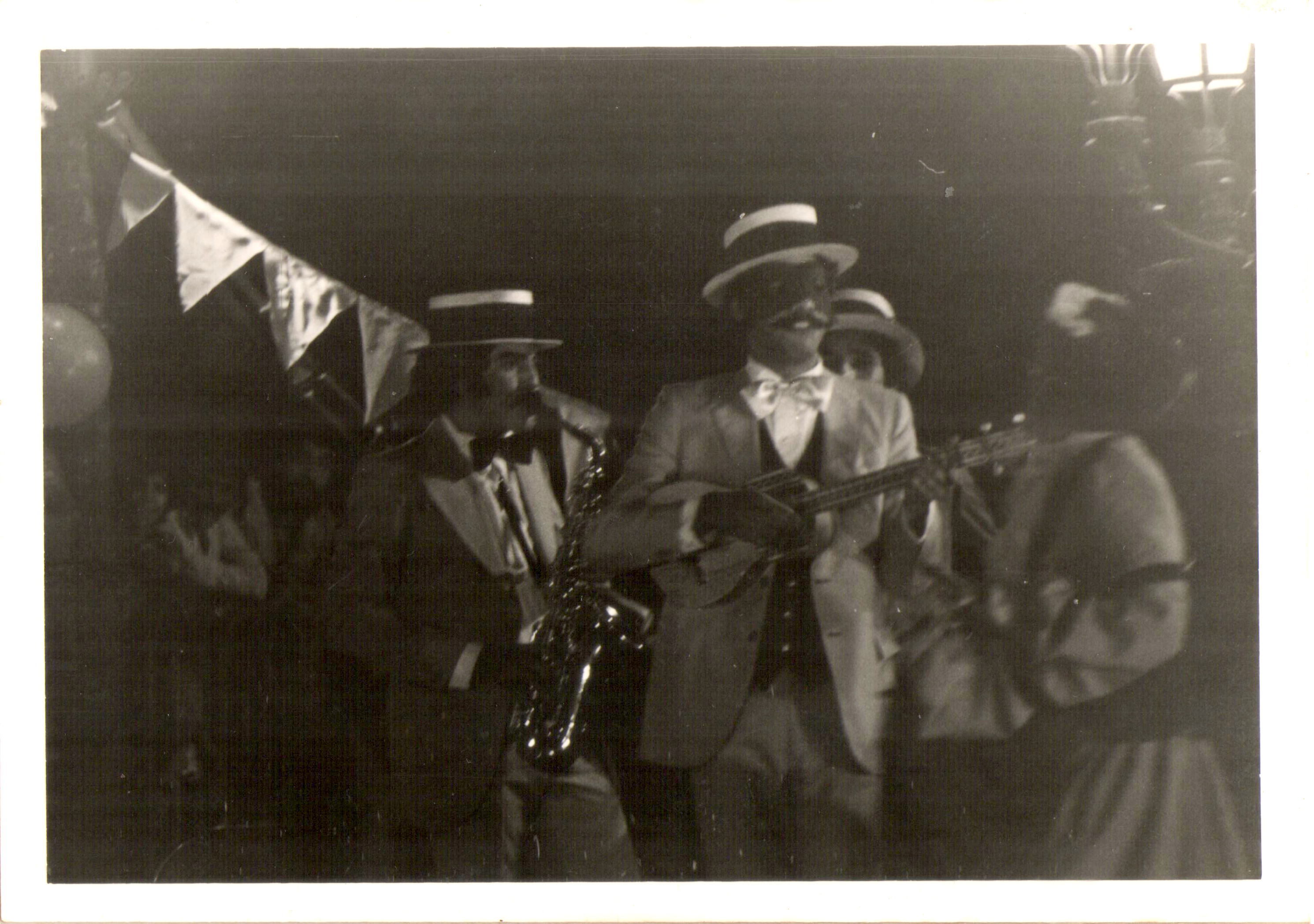
Alma Llanera (plain soul)This is one of the most important songs in the country and is considered the second national anthem. The lyrics are by Rafael Bolívar Coronado and the music by Pedro Elías Gutiérrez.This song was written for the end of a zarzuela, which is the one originally named "Alma Llanera". It was released in Caracas in 1914 and was an amazing success, especially for the final song. However, the zarzuela was never performed again, perhaps because of flaws in its dramatic structure. But the song took flight. Although all Venezuelans (and also worldwide) knew it, for many years almost nobody knew about this zarzuela. | Alma LlaneraEsta una de las canciones más importantes del país, es considerado el segundo himno nacional. La letra es de Rafael Bolívar Coronado y la música de Pedro Elías Gutiérrez.Esta canción fue escrita para el final de una zarzuela, que es la que originalmente lleva el nombre de "Alma Llanera". La misma fue estrenada en Caracas en 1914 y tuvo un éxito asombroso, especialmente por la canción final. Sin embargo la zarzuela no volvió a ser interpretada, quizá por fallas en su estructura dramática. Pero la canción alzó vuelo alto. Aunque todos los venezolanos (y también a nivel mundial) la conocían, durante muchos años casi nadie sabía de la zarzuela. |
|---|
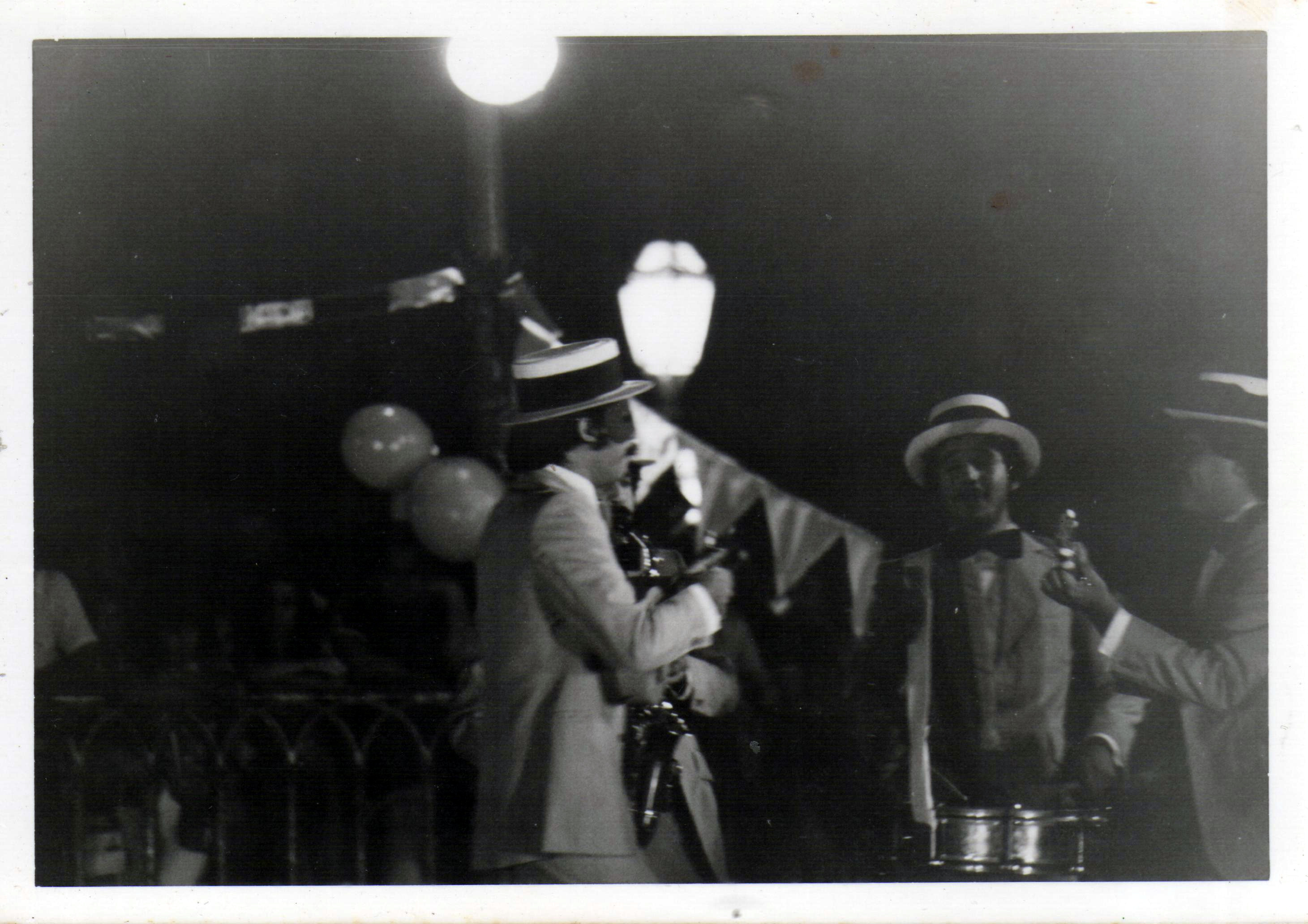
Although I did not participate as a musician during the play, I did not miss the opportunity to play before the start.
Aunque yo no participaba como músico durante la obra, no perdí la oportunidad de tocar antes del inicio.
The rescueWith the aim of making known the origin of the song, in 1982, my father, renowned playwright and theatre director, Humberto Orsini (of whom I have written before), wrote a play with the title "The True Story of Alma Llanera". A show conceived to be presented in theatres, but mainly thought for squares and open spaces. The play takes place during the carnivals of 1926 and consists of two parts. The first tells how the world was at the time of the zarzuela's premiere (1914), what life was like in Caracas and presents several sainetes (a brief, humorous and very characteristic type of theater in the city and very popular at the beginning of the 20th century). And in the second part, a kind of summary of the zarzuela was performed. | El rescateCon miras a dar a conocer el origen de la canción, en 1982, mi papá, reconocido dramaturgo y director de teatro, Humberto Orsini (de quien he escrito antes), escribió una obra con el título de "La Verdadera Historia de Alma Llanera". Un espectáculo concebido para ser presentado en teatros, pero principalmente pensado para plazas y espacios abiertos. La obra se desarrolla en los carnavales de 1926 y consta de dos partes. En la primera se cuenta cómo estaba el mundo para la fecha del estreno de la zarzuela (1914), cómo era la vida en Caracas y se presentan varios sainetes (un tipo de teatro breve, humorístico y muy característico de la ciudad y muy popular a comienzos del siglo XX). Y en la segunda parte se representaba una especie de resumen de la zarzuela. |
|---|
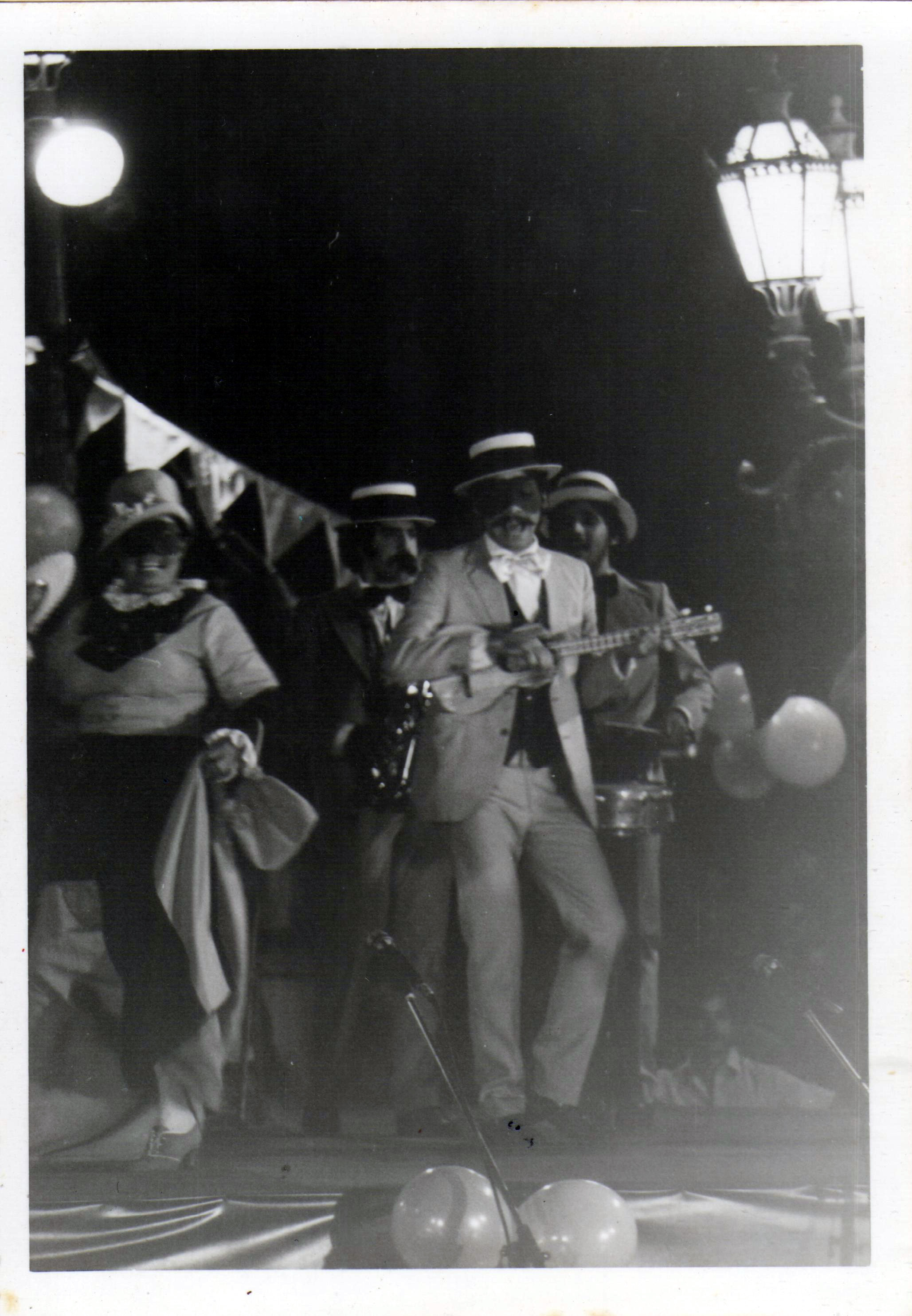
The actress on this picture is Malú del Carmen (my mom) who also was part of the cast.
La actriz en la foto en Malú del Carmen (mi mamá), quien también era parte del elenco
The musicI was responsible for the musicalization of that work and that's how I came to know Cañonera Music. It was precisely from here that my subsequent life project emerged, with which I have been working for almost 40 years now, the group Los Cañoneros. As I was one of the actors, I only made the selection of the repertoire and the musicians, the arrangements and compositions, as well as directing the musical group during the rehearsals, but I didn't play with them. Of the musicians who played there, two became part of the group Los Cañoneros. The drummer is still part of the group to this day. | La músicaYo fui el responsable de la musicalización de esa obra y fue así como conocí la Música Cañonera. Fue precisamente de aquí de donde surgió mi posterior proyecto de vida con el que ya llevo casi 40 años de trabajo, el grupo Los Cañoneros. Como yo era uno de los actores, yo solo hice la selección del repertorio y los músicos, los arreglos y composiciones, así como dirigir el grupo musical durante los ensayos, pero no tocaba con ellos. De los músicos que tocaban allí, dos pasaron a formar parte del grupo Los Cañoneros. El baterista sigue siendo parte del grupo hasta el día de hoy. |
|---|
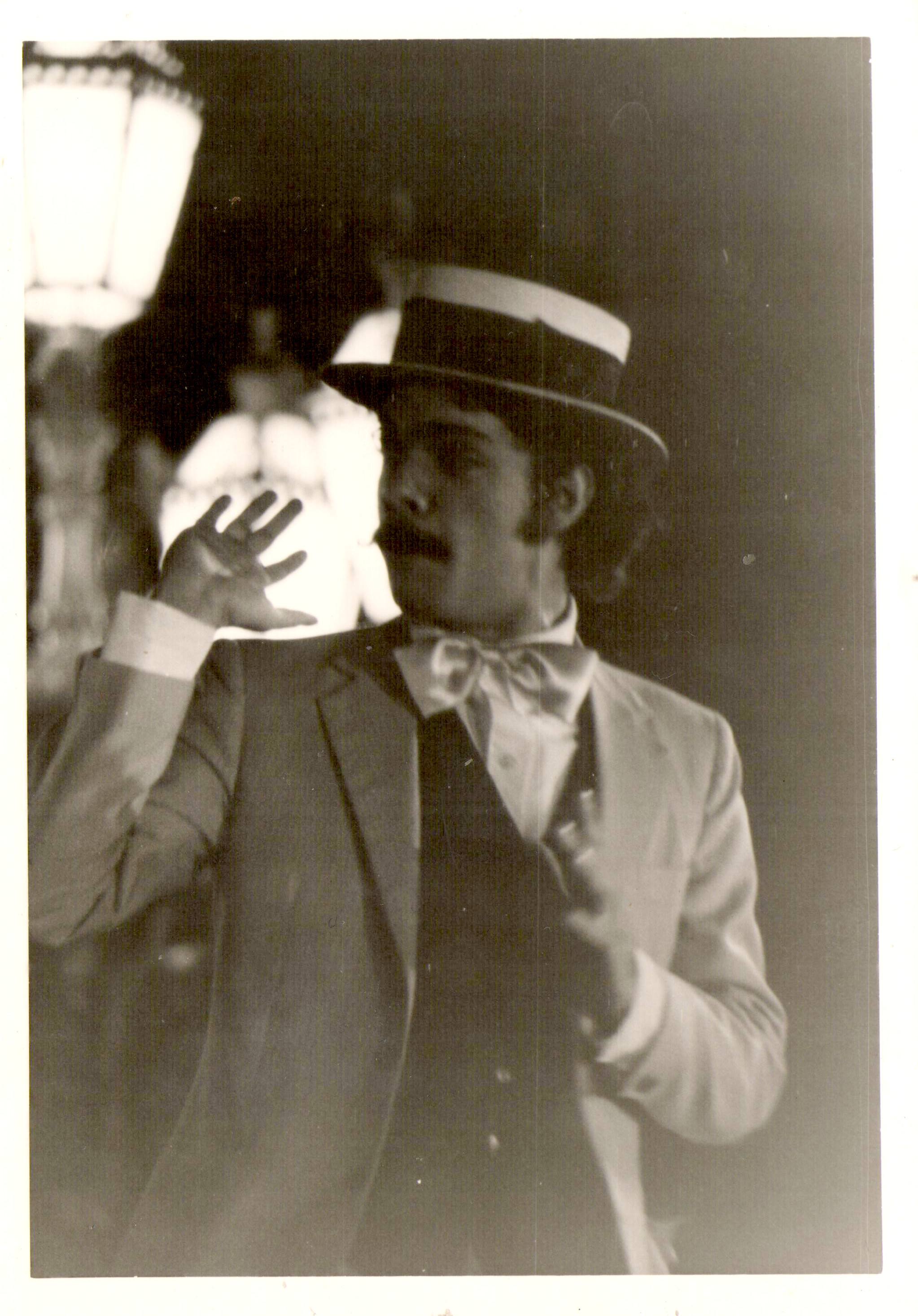
That's me as a dandy from the 20ths!
¡Este soy yo como un patiquín de los años 20!
The stagingOne of the amazing things about these pictures is that they correspond to the original cast. This team didn't last long, as some actors had other commitments and the other actor died shortly afterwards. The play was on tour for more than two years, but with several changes in the cast. However, here are the first ones who performed it. In the first part we all played various roles, but in zarzuela we were: | La puesta en escenaUna de las cosas increíbles de estas fotos, es que corresponden al elenco original. Este equipo no duró mucho, pues algunos actores tenían otros compromisos y el otro actor falleció poco tiempo después. La obra estuvo de gira por más de dos años, pero con varios cambios en el elenco. Sin embargo aquí están los primeros que la representaron. En la primera parte todos representamos varios papeles, pero en la zarzuela éramos: |
|---|
Rita - Raiza Palumbo
Cubito - @Ylich Orsini
Casilda - María Escalona
Miguel - Agustín Torrealba
Enriqueta - Malú del Carmen
Santa - Vilma Otazo
Rosalía - Luisa Mota
* Musicians / Músicos
Cuatro & Vocal - Edgar Ojeda
Alto sax / Saxo alto - Augusto Rousset
Snare drum / Redoblante - Arnaldo Sánchez
* Author & director / Autor y director
Humberto Orsini
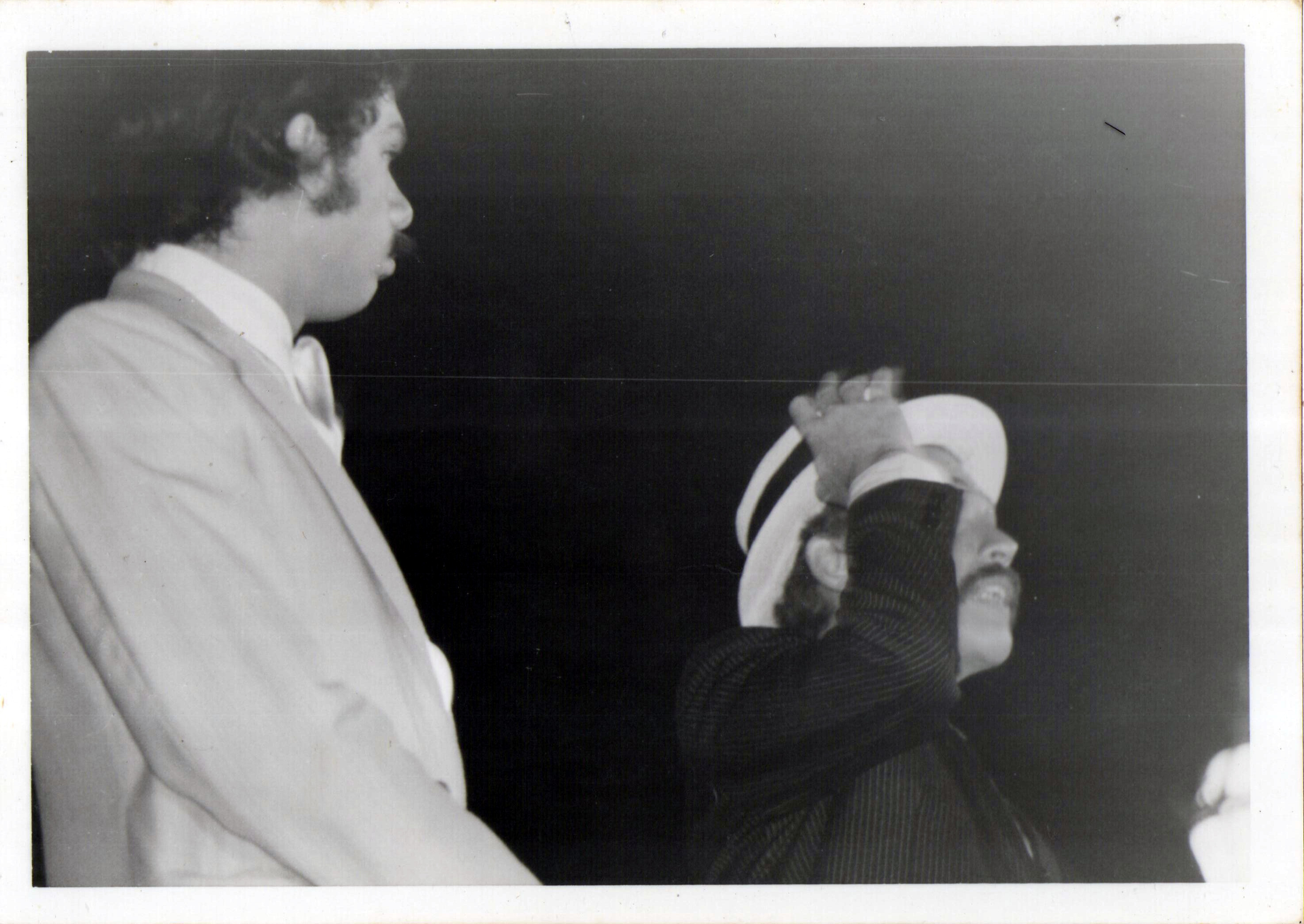
Ylich & Agustín Torrealba
The SainetesThe first part included some short sainetes by outstanding authors of the time such as Rafael Guinand, Leoncio Martínez "Leo", Rafael Otazo and Antonio Saavedra, among others. All that part was developed as if it was a cultural act, in the style of the school acts, with presenters, musical parts and several sainetes in the style of comedy sketches. All this created a festive atmosphere, despite the fact that the political situation of those times was also denounced and topics such as the First World War were discussed. | Los SainetesLa primera parte incluía algunos sainetes breves de destacados autores de la época como lo eran Rafael Guinand, Leoncio Martínez "Leo", Rafael Otazo y Antonio Saavedra, entre otros. Toda esa parte se desarrollaba como si fuera un acto cultural, al estilo de los actos escolares, con presentadores, partes musicales y varios sainetes al estilo de los sketch. Todo esto creaba un ambiente festivo, a pesar de que también se denunciaba la situación política de aquellos tiempos y se hablaba de temas como la Primera Guerra Mundial. |
|---|
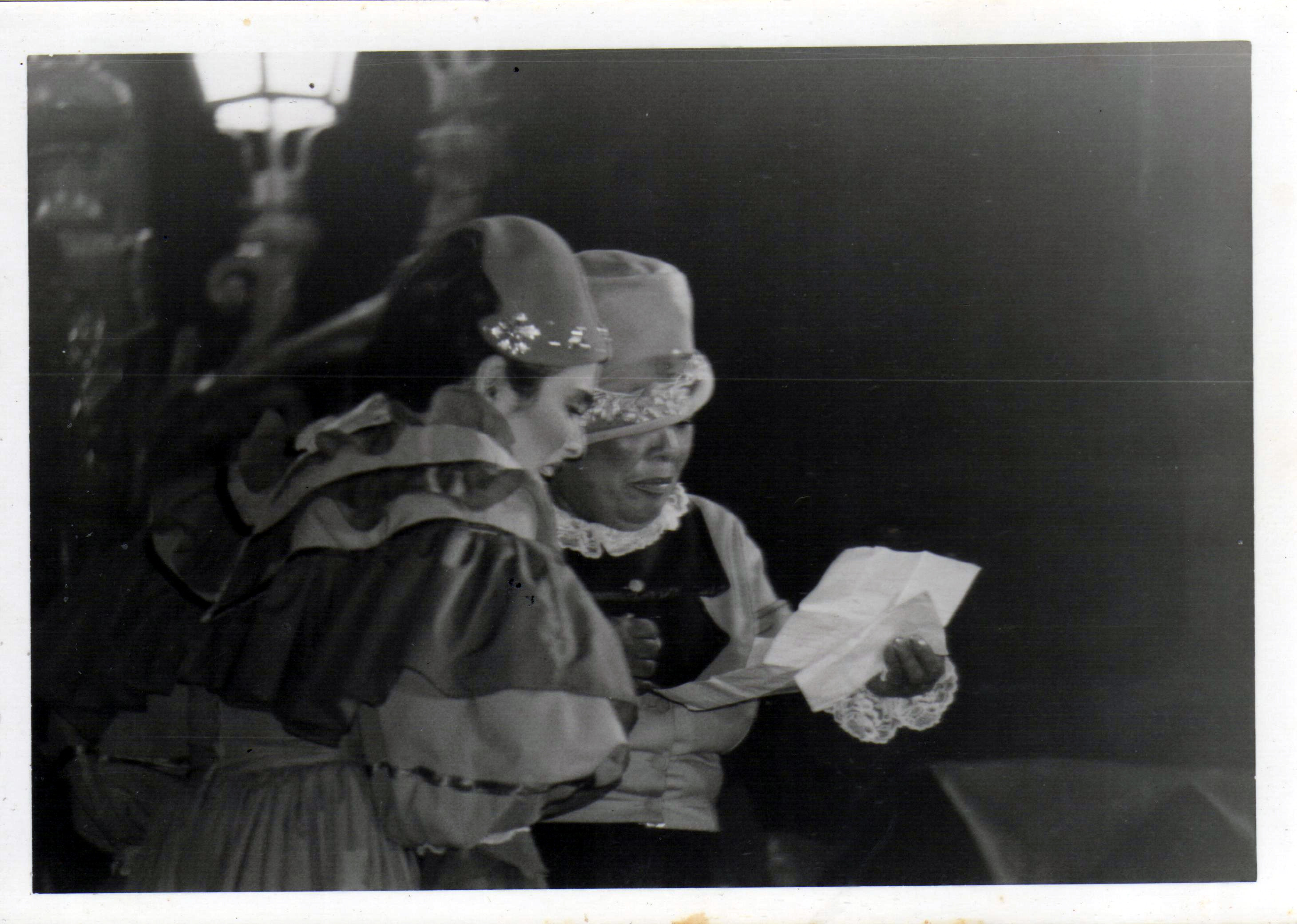
Vilma Otazo & Malú del Carmen
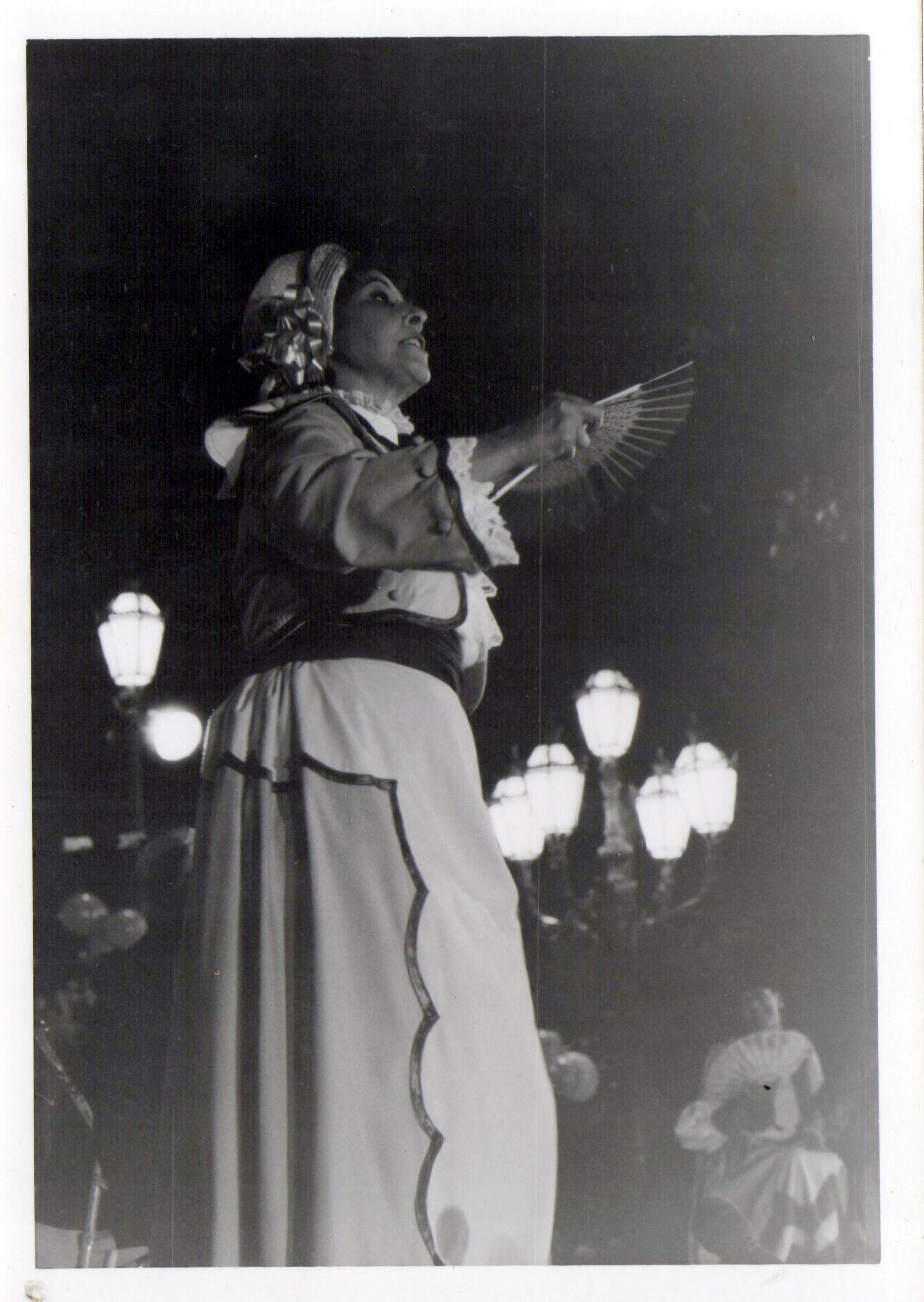
Luisa Mota
The photosOne of the strange things about these photos is that I don't know who took them and why all the actors don't show up. I am sure that this is one of the first performances, because Agustín Torrealba and Vilma Otazo are there, and they were replaced very soon. Another interesting aspect is that we used in the background a large canvas with a representative drawing of the Plaza Bolivar, which was an iconic site of Caracas, where many events were held and was the central axis of the city in the early twentieth century. These photos correspond to a performance precisely at the Plaza Bolivar in Caracas. For that reason we did not use the scenographic element that day. The lanterns seen in the background are from the square, which still preserves most of its characteristics. | Las fotosUna de las cosas extrañas de estas fotos, es que no sé quién las tomó y por qué no aparecen todos los actores. Tengo la certeza de que se trata de una de las prineras funciones, pues están allí Agustín Torrealba y Vilma Otazo, quienes fueron sustituidos muy pronto. Otro de los aspectos interesantes es que nosotros usábamos de fondo una gran tela con un dibujo representativo de la Plaza Bolívar, que era un sitio icónico de Caracas, en el cual se hacían muchos eventos y era el eje central de la ciudad a comienzos del siglo XX. Estas fotos corresponden a una actuación precisamente en la Plaza Bolívar de Caracas. Por esa razón no usamos el elemento escenográfico ese día. Los faroles que se ven de fondo, son de la Plaza, que aún conserva la mayor parte de sus características. |
|---|
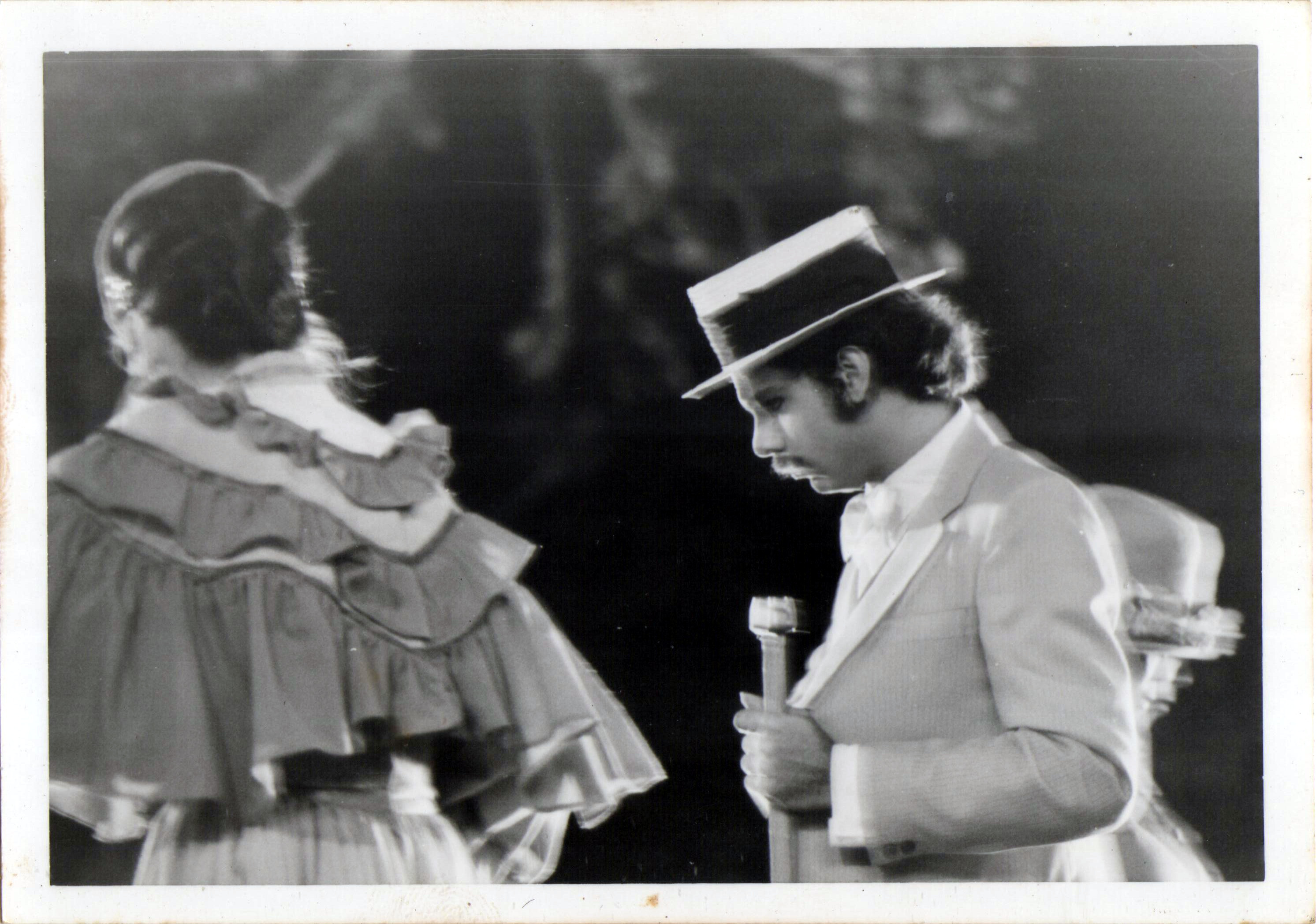
Moment of sadness speaking about the First World War
Momento de tristeza hablando sobre la Primera Guerra Mundial

Vilma Otazo
The zarzuelaThe story takes place in the Venezuelan plains and the protagonist is the young Rita, who lives with her family, including her mother Enriqueta. They are waiting for a visit from their friends Rosalía and her daughter Santa. Rita is a restless girl who has fallen in love with Cubito, a man with many skills and who has a reputation for womanizing, which is why their meetings are secret. When her friends arrive, this is one of the topics of conversation, because they insist to Rita that he is not a good match. | La zarzuelaLa historia se desarrolla en los llanos venezolanos y la protagonista es la joven Rita, quien vive con su familia, incluyendo su madre Enriqueta. Ellas están esperando la visita de sus amigas Rosalía y su hija Santa. Rita es una muchacha inquieta que se ha enamorado de Cubito, un hombre con muchas habilidades, que tiene fama de mujeriego, razón por la cual sus encuentros son a escondidas. A la llegada de las amigas es ese uno de los temas de conversación, pues ellas le insisten a Rita que él no es un buen partido. |
|---|
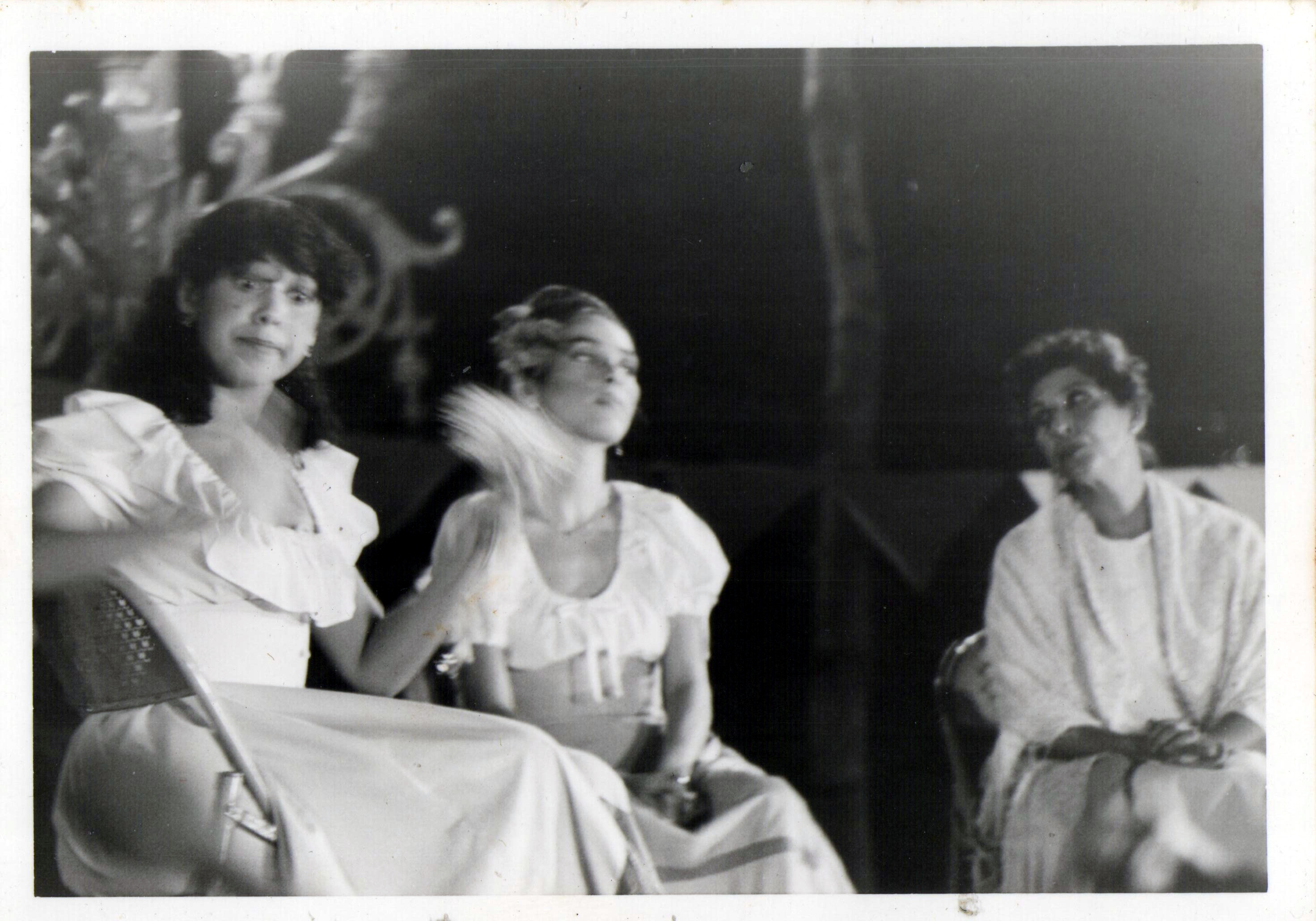
Raiza Palumbo, Vilma Otazo & Luisa Mota

Rita, Santa & Rosalía
| Casilda, who unfortunately is not in these photos, is a housekeeper who serves as a matchmaker for Rita and supports her in her romance with Cubito. She helps them to arrange a meeting, but before it takes place it is Santa who meets Cubito. She claims that he left her, but that she still loves him. This is when we confirm that the bad reputation he has is true. | Casilda, que desafortunadamente no está en estas fotos, es una empleada que sirve de celestina para Rita y la apoya en su romance con Cubito. Ella los ayuda a organizar una reunión, pero antes de que éste ocurra, es Santa quien se encuentra con Cubito. Ella le reclama que él la dejó, pero que ella todavía lo ama. En su trato tan déspota con ella es cuando confirmamos que la mala reputación que tiene es cierta. |
|---|
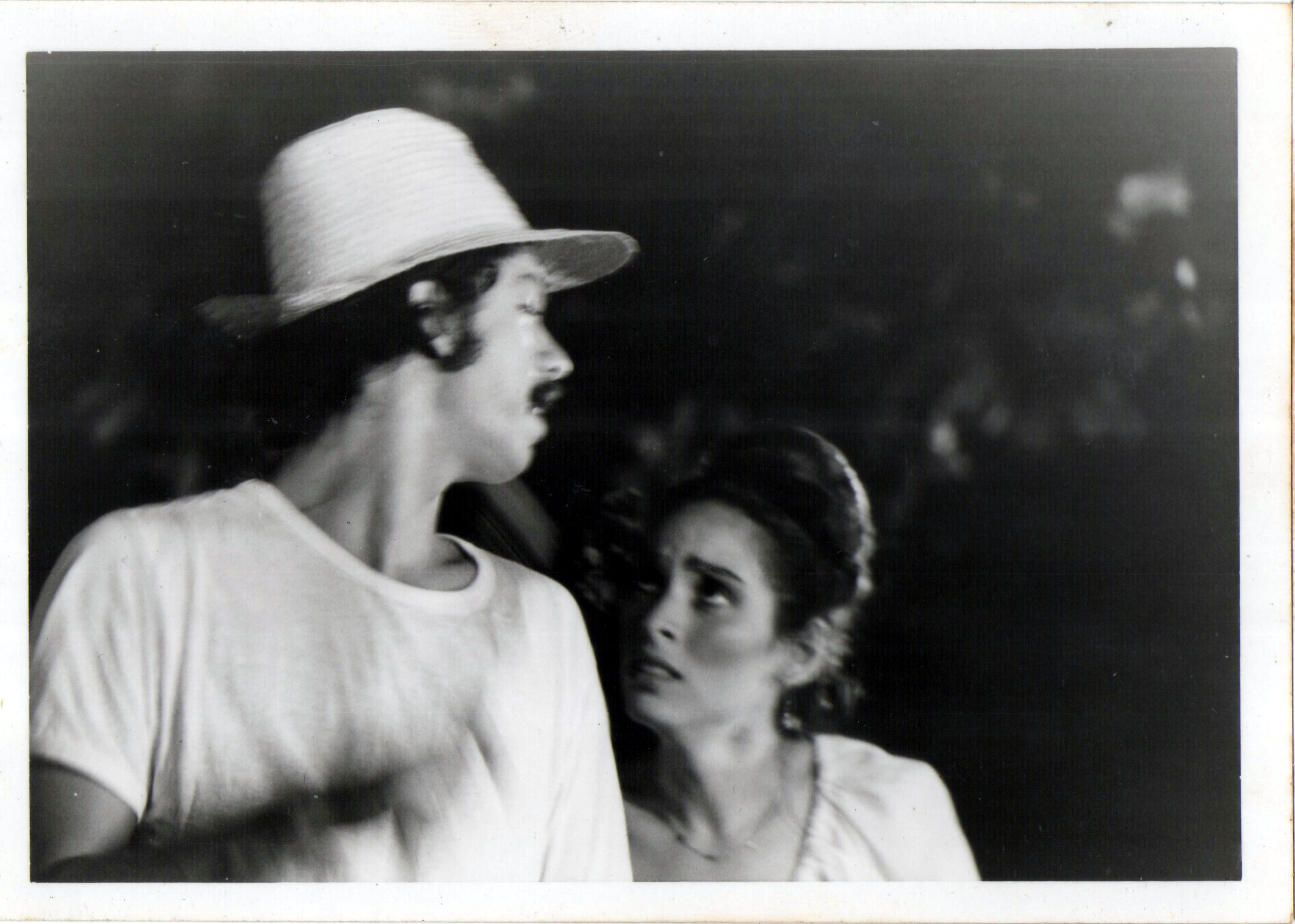.jpg)
Cubito and Santa discuss | Cubito y Santa discuten

Santa abandoned | Santa abandonada
| Miguel, who is an employee of Rita's family, is also in love with her, but she ignores him. That's why he's so upset, because he knows who Cubito is. He promises himself that when they meet he will kill him. | Miguel, quien es empleado de la familia de Rita, también está enamorado de ella, pero ella lo rechaza. Razón que lo tiene muy molesto, pues él sabe bien quién es Cubito. Él se promete a sí mismo que cuando se encuentren él se encargará de matarlo. |
|---|
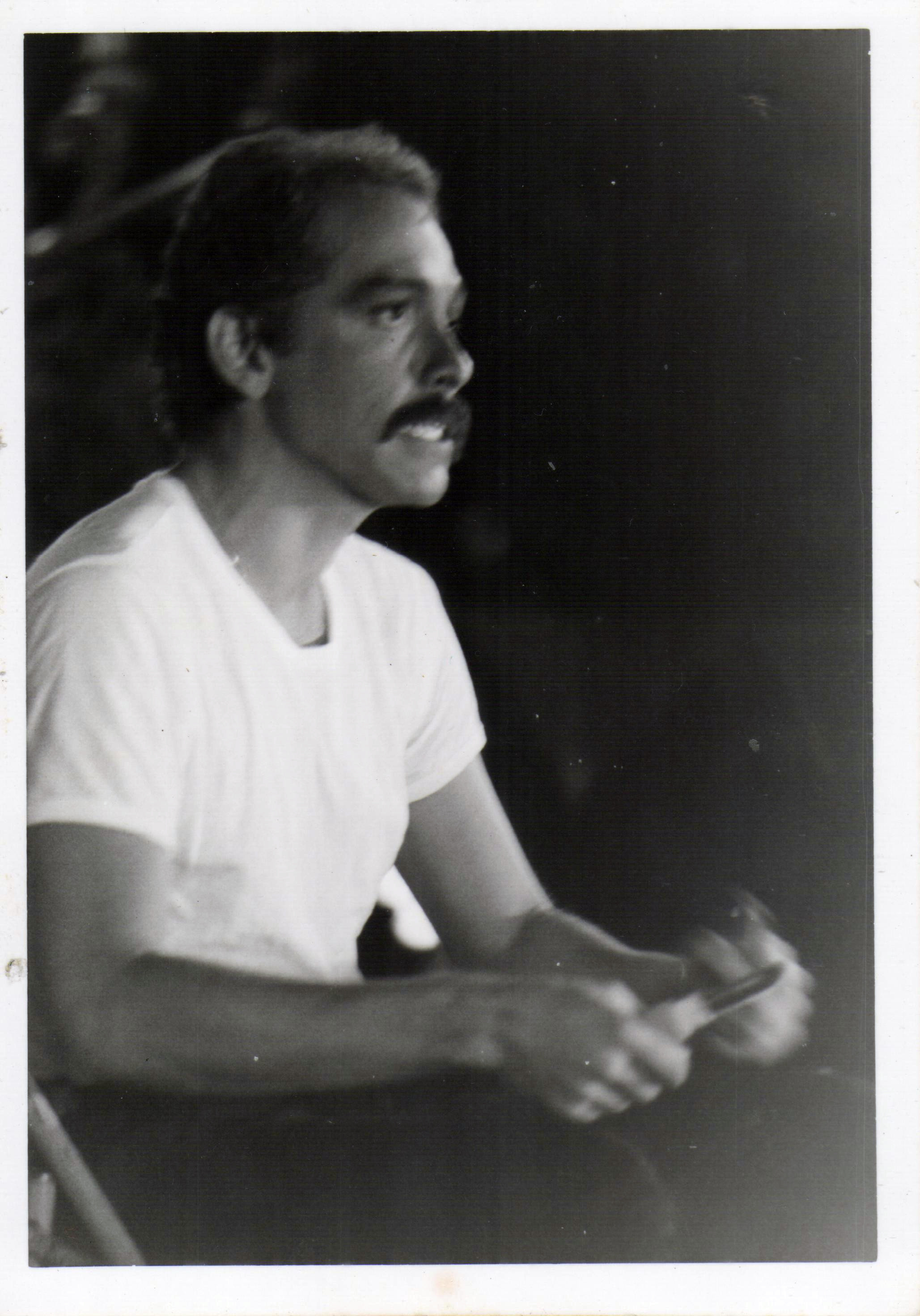
Miguel - Agutín Torrealba
| Finally the meeting between the lovers takes place, in which Cubito shows off all his poetry to make her fall in love and she corresponds to him with passion. Just at that moment Miguel appears, who finds them in the middle of their idyll and decides to finish off his rival, wielding a knife. | Finalmente se produce el encuentro entre los enamorados, en el que Cubito hace gala de toda su poesía para enamorarla y ella le corresponde con pasión. Justo en ese momento aparece Miguel, quien los encuentra en pleno idilio y decide acabar con su rival, empuñando un cuchillo. |
|---|
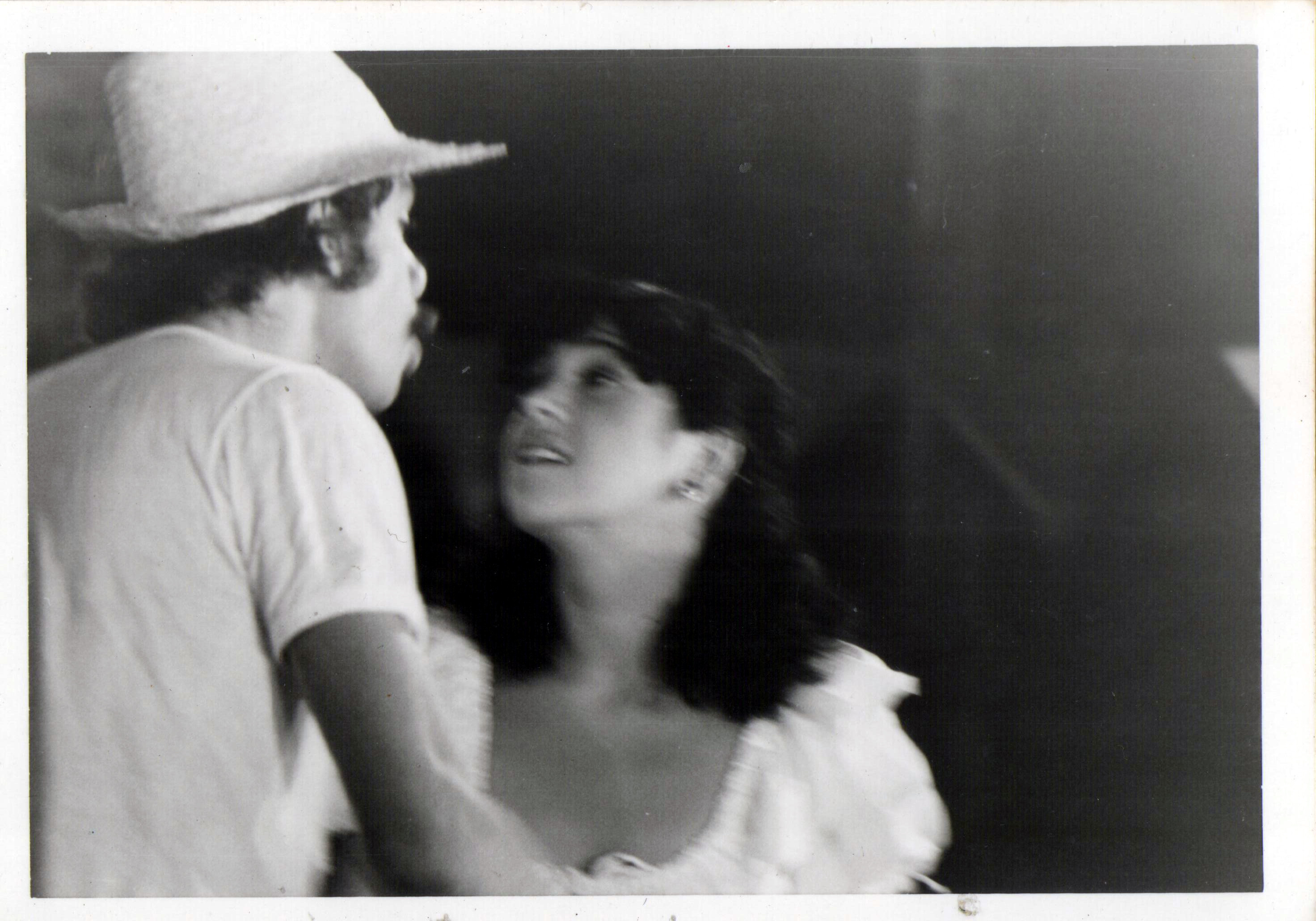
Ylich Orsini & Raiza Palumbo
So far!Well, this already looked like a photonovel, but unfortunately those are all the photos from this historical montage of Humberto Orsini's "The True History of Alma Llanera" in Caracas' Plaza Bolivar in 1982. This play was represented by "Tabla Redonda - Teatro Estudio", which was the name of the last group that my father founded and directed. | ¡Hasta aquí!Bueno, ésto ya parecía una fotonovela, pero lamentablemente esas son todas las fotos de este montaje histórico de la obra "La Verdadera Historia de Alma Llanera", de Humberto Orsini, en la Plaza Bolívar de Caracas, en 1982. Esta obra era representada por "Tabla Redonda - Teatro Estudio", que era el nombre del último grupo que fundó y dirigió mi papá. |
|---|

Epilogue >>> | Epílogo >>> |
|---|

Epilogue 2Thanks to this work and other similar initiatives, the story of Alma Llanera became widely known and so Pedro Elías Gutiérrez and Rafael Bolívar Coronado were compensated as authors of the zarzuela that gave life to Venezuela's second national anthem. | Epílogo 2Gracias a esta obra y otras iniciativas parecidas, la historia de Alma Llanera se hizo ampliamente conocida y así fueron resarcidos Pedro Elías Gutiérrez y Rafael Bolívar Coronado, como autores de la zarzuela que le dio vida al segundo himno nacional de Venezuela. |
|---|


Shared on Twitter
and Facebook
#posh #oc
Grandiosa historia hermano.
¡Gracias hermano!
Mi respeto al maestro Orsini, a quien respeté profundamente en vida y se lo hice saber. Un maravilloso post y un indispensable testimonio histórico del teatro venezolano. Lo agradezco de sobremanera.
¡Muchísimas gracias a ti @rubendariogil!
Excelente publicación..! "Historia viva"...no podemos saber donde nos dirigimos si no sabemos de donde venimos y que hayas expuesto que el alma llanera forma parte de una zarzuela, pues, no me lo esperaba..! Hay vainas en la vida que no dejan de sorprender y estas es una de ellas...lamento no tener una vara para dar un mínimo de 200 HTU a este post...un abrazo..!
Jejeje, pues yo también lamento que no tengas esa vara... :-D
Pues sí y yo creo que este tema cómo que va a requerir una segunda entrega para entrar en más detalles. ¡Es un tema apasionante!
¡Gracias por pasar por acá y dejar tu comentario!
Este post ha sido propuesto para ser votado por el equipo de curación de Cervantes.
Este post fue seleccionado para el reporte de curación diaria.
¡Felicidades, sigue haciendo un buen trabajo!
¡Muy agradecido por esto!